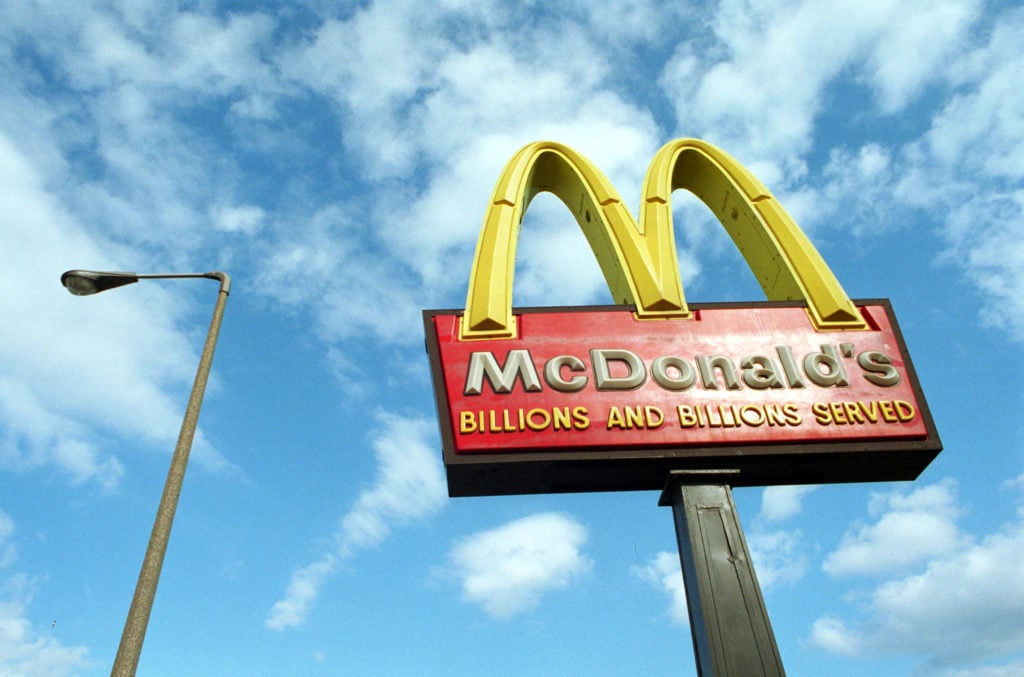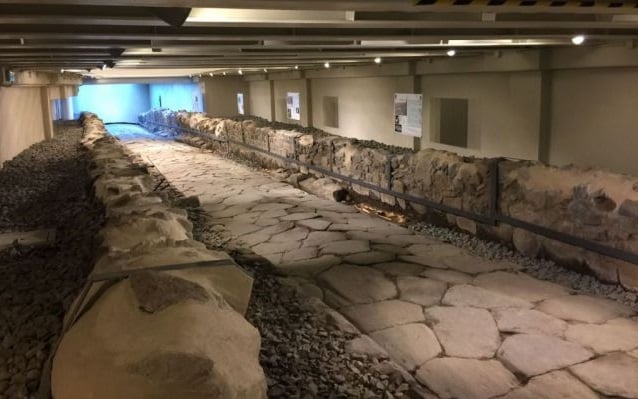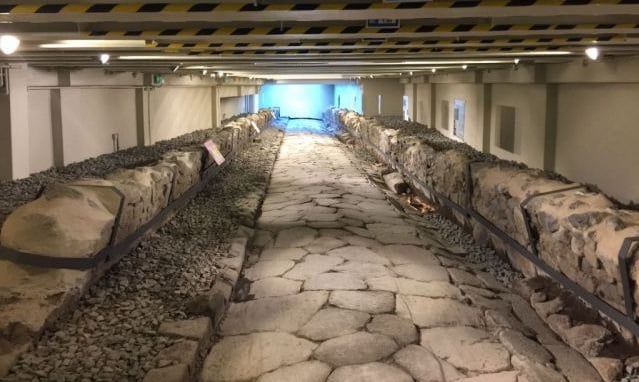Art World
Italy’s Newest McDonald’s Offers Customers an Ancient ‘Museum-Restaurant’ Experience
The burger giant discovered an ancient Roman road on the site of a new branch.

The burger giant discovered an ancient Roman road on the site of a new branch.

Sarah Cascone

When McDonald’s broke ground on a new location outside Rome in 2014, they uncovered the buried remains of an ancient Roman road. Now following a €300,000 ($315,000) restoration project funded by McDonald’s Italia, the fast food joint is open to the public, offering customers a slice of ancient history with their Big Mac and fries.
“This is our first museum-restaurant,” Mario Federico, the head of McDonald’s Italia, told the Telegraph.
“We decided with McDonald’s to protect and promote this important site, which would have otherwise fallen again into oblivion,” the local archaeological superintendent for the Culture Ministry, Alfonsina Russo told the New York Times. Construction projects in Italy often turn up ancient ruins, but they are usually reburied, because “it’s better to protect them than to leave them exposed, when it’s not possible to properly care for them.”

The ancient Roman road uncovered at a McDonald’s outside Rome. Courtesy of Superintendency for Archaeology, Fine Arts and Landscape.
The project exposes a 147-foot section of the road, which is believed to be a side street, known as a diverticulum, leading to the Appian Way, the main road built by the Romans in 312 BC. The newly uncovered road was built between the second and third centuries BC, and probably led to a villa belonging to a wealthy family.
The passageway contains deep grooves from cart wheels, suggesting it was used until the second or third century AD, according to experts. Three skeletons were discovered at the site, suggesting that it was later abandoned. The remains have yet to be carbon dated, and resin copies have been put on display in place of the originals.

The ancient Roman road uncovered at a McDonald’s outside Rome. Courtesy of Superintendency for Archaeology, Fine Arts and Landscape.
The site officially opened to the public on February 21, and McDonald’s has pledged to pay for its upkeep. The ancient road is on view in a glass-roofed gallery, allowing visitors to peer down into history. Interested parties don’t even have to enter the McDonald’s to see the historic display, since there is a separate door independent from the restaurant chain.
McDonald’s isn’t the only major brand to spend big bucks on conserving ancient ruins in Italy: Rome’s famed Spanish Steps were restored courtesy of Bulgari, Fendi funded restorations at Rome’s Trevi Foundation, and work at Rome’s famed Colosseum was bankrolled by Diego Della Valle of shoe company Tod’s. “The project,” noted the McDonald’s Italia head, “is a good example of how the public and private sectors can collaborate effectively on reclaiming cultural heritage.”
This comes at a time when Italy is experiencing record public debt, which the European Commission is urging the country to cut.
McDonald’s Roma Appia is located at via Appia Nuova. km 19.750 – Località Frattocchie, 00047 Marino RM, Italy.